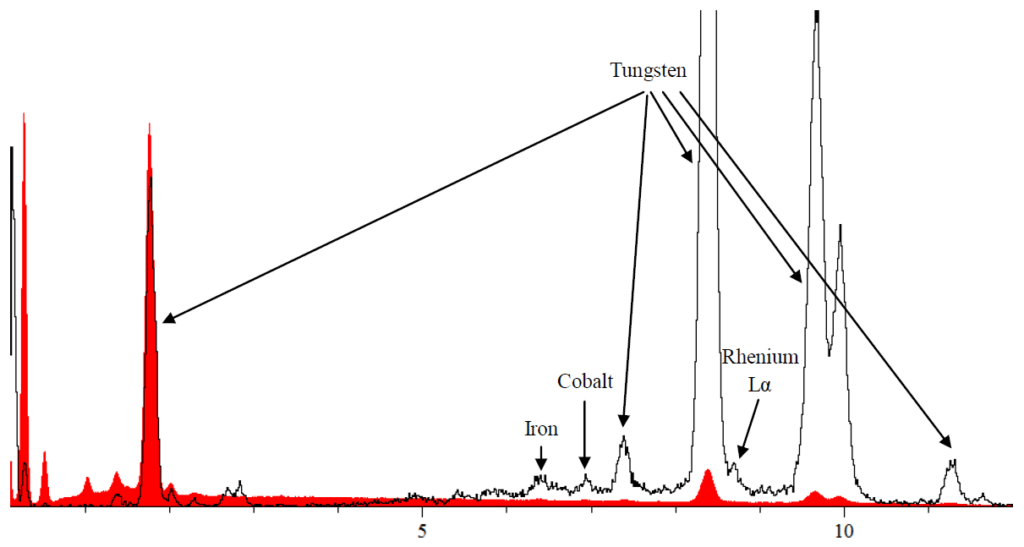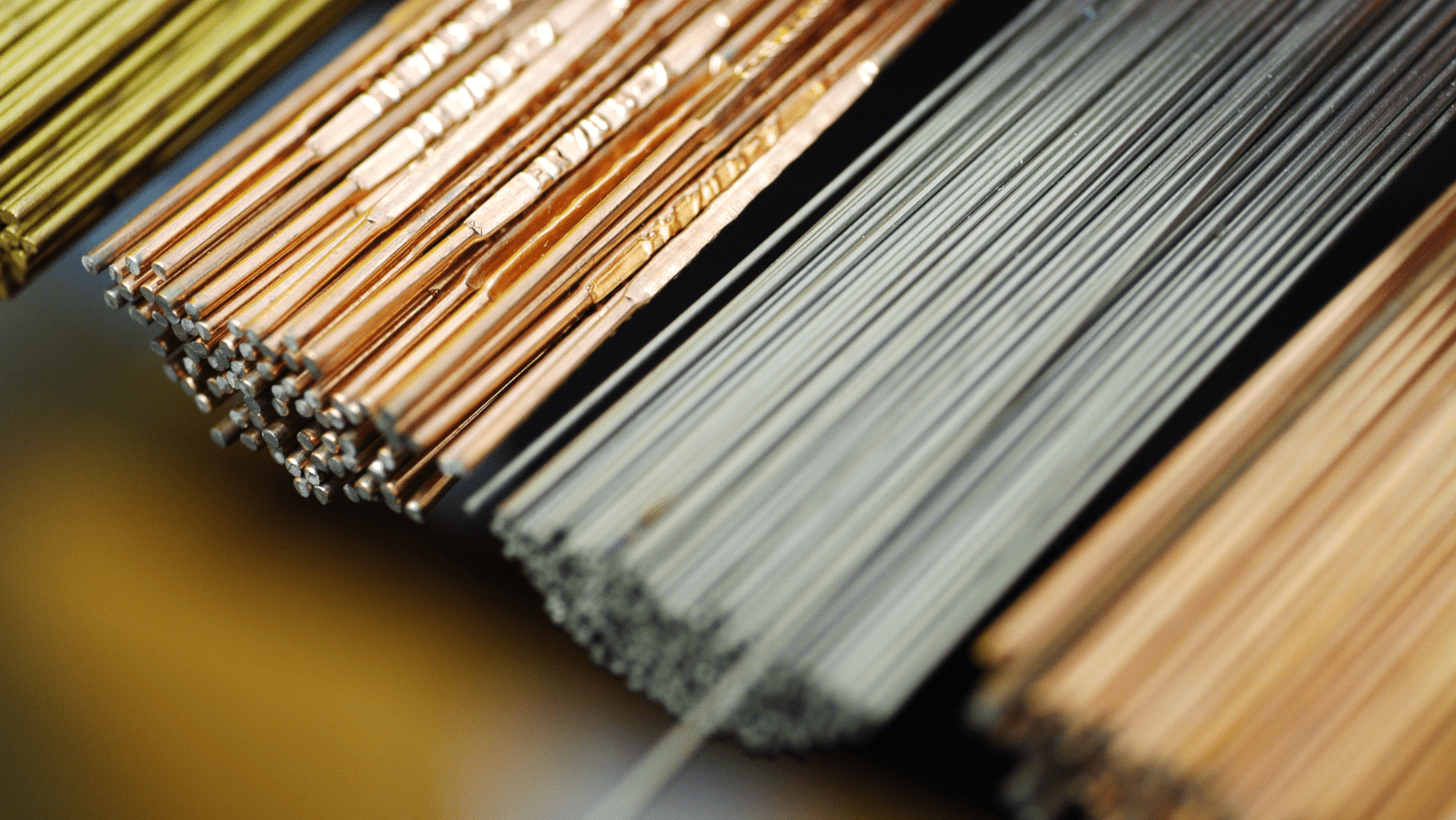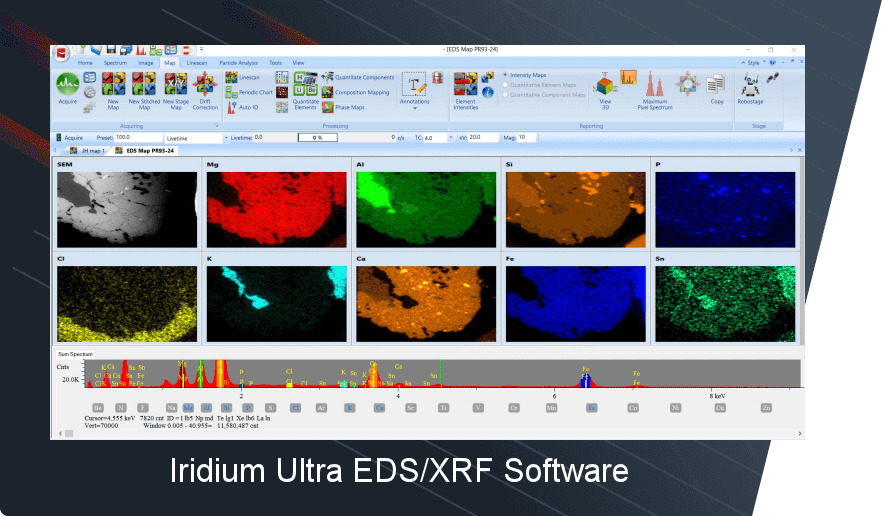Selecting the proper analytical technique is crucial in materials characterization, particularly in metallurgical and alloy applications. Two commonly used methods, Energy Dispersive Spectroscopy (EDS) and Micro X-ray Fluorescence (microXRF), offer distinct capabilities, but microXRF stands out in some critical regions. This article explores the advantages of microXRF over EDS, particularly for detecting trace elements in alloy samples, and highlights various use cases in metallurgical applications.
Superior Elemental Detection: A Case Study with Rhenium Alloys
A recent analysis comparing EDS and microXRF techniques on rhenium alloy samples demonstrated the superior performance of microXRF. The study involved analyzing a small wire and a hex rod sample to detect rhenium and iron contamination. The results highlighted a significant advantage of microXRF over EDS:
- Better Peak Resolution: MicroXRF was able to resolve the rhenium Lα peak at 8.6 keV, while EDS could only detect the rhenium Mα peak at 1.8 keV, which overlapped with a tungsten energy line. This overlap made it impossible for EDS to reliably detect rhenium in the sample, which is a critical issue in alloy analysis, where precise element detection is necessary.
- Trace Element Detection: MicroXRF demonstrated its ability to resolve trace levels of iron and cobalt, which EDS failed to detect. This makes microXRF particularly valuable for applications where detecting trace contaminants or minor constituents is essential.
- Quantitative Analysis with Standards: MicroXRF uses a calibration curve created with standards of known concentrations for quantitative analysis. This stepwise calibration allows for accurate quantification of elements like rhenium, which is often challenging with EDS due to its resolution limitations.

Figure 1: Wire sample analyzed utilizing Energy Dispersive Spectroscopy (EDS) at 20keV and utilizing micro-X-ray Fluorescence (XRF) at 35keV. The two methods are compared by overlaying the spectra from each technique. In the overlay above, EDS is seen in red, while XRF is seen in black.
Advantages of MicroXRF in Metallurgical Applications
MicroXRF’s ability to detect a broader range of elements, including light and heavy elements, and its superior resolution make it an ideal tool for metallurgical applications. Here are some key advantages:
- Higher Sensitivity for Heavy Metals: MicroXRF is particularly effective for detecting heavy metals, such as tungsten, rhenium, and platinum, which are often used in high-performance alloys. The ability to resolve overlapping peaks that EDS struggles with makes microXRF invaluable in these applications.
- Non-Destructive Analysis: MicroXRF does not damage the sample, making it suitable for applications where preserving the integrity of rare or valuable samples is crucial. This is particularly important in the aerospace and defense industries, where component analysis must be precise and non-destructive.
- Ability to Handle Irregular Shapes and Large Samples: Unlike EDS, which requires a highly polished flat surface for accurate results, microXRF can analyze samples of varying shapes and sizes, such as wires, rods, and other complex geometries, without extensive sample preparation.
Use Cases of MicroXRF in Alloys and Metallurgical Applications
- High-Temperature Alloys: In producing high-temperature superalloys commonly used in jet engines and gas turbines, microXRF is essential for verifying elemental composition and ensuring the absence of trace contaminants that could affect performance.
- Corrosion Resistance Analysis: MicroXRF can assess the elemental composition of stainless steels and other corrosion-resistant alloys. This is critical in industries such as chemical processing, where material performance is directly tied to the precise alloy composition.
- Quality Control in Metal Manufacturing: For manufacturers of specialty metals and alloys, microXRF provides a reliable method for quality control, ensuring that the alloy composition meets specifications. This is especially valuable in the automotive and aerospace sectors, where material failures can have catastrophic consequences.
- Analysis of Coatings and Platings: MicroXRF is also used to evaluate the thickness and composition of metal coatings and platings. This capability is important in electronics, where coatings like gold or platinum enhance conductivity and protect against corrosion.
Conclusion
MicroXRF’s capabilities make it an invaluable tool in metallurgical analysis. It offers advantages over traditional EDS, particularly in detecting and quantifying trace elements. Its ability to handle diverse sample types, provide superior elemental resolution, and perform non-destructive analysis positions microXRF as the preferred choice for many critical applications across various industries. For those looking to enhance their materials characterization capabilities, microXRF provides the precision and reliability needed to tackle the most challenging metallurgical analyses.
Explore more about the Atlas microXRF and how it can revolutionize your work by visiting our website or contacting our team directly.
IXRF Systems is a leading provider of X-ray fluorescence instrumentation. With our advanced analytical solutions, we are committed to supporting research, quality control, and educational endeavors across various industries.


